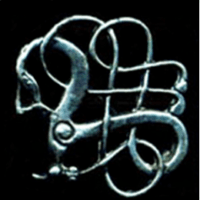- Version
- Download 768
- File Size 0.00 KB
- File Count 1
- Create Date 26 March 2002
- Last Updated 21 September 2023
Report of Animal Bones from Tjarnargata 3C, Reykjavík, Iceland
During rescue excavations in downtown Reykjavík in 1999 nearly 100 kg of well-preserved animal bone was recovered in investigations at Tjarnargata 3 C by Fornleifastofnun Islands (FSÍ) directed by Mjöll Snaesdóttir. This bone collection (or archaeofauna) was largely sieved (4 mm and 1 mm mesh wet screen) and represents one of the largest archaeofauna recovered from Iceland to date. Analysis was carried out at City University of New York’s Northern Science & Education Center’s two zooarchaeology laboratories at Brooklyn College and Hunter College in 2000-01. The analyzed bone materials were returned for long term curation at the National Museum of Iceland in January 2002.
The Tjarnargata 3C collections derive from a widespread sheet midden deposit that post-dates an AD 1500 tephra, and probably represents refuse discarded by multiple households and local shops and factories. While the collection cannot be closely dated, the great majority of the bone collection probably derives from the 18th and early 19 th centuries- a period of rapid urbanization of central Reykjavik. This collection thus differs from virtually all other previously studied Icelandic bone materials that derive from single farms and from the activities of one or two household units, and some of these differences are apparent in the condition of the recovered bone. The collection shows some distinctive urban characteristics, with clear indication of local butchery being significantly supplemented by meat- rich joints presumably imported from nearby farms provisioning the growing city. The remains of some preserved hams almost certainly indicate trans-Atlantic shipment, and serve to illustrate the expanded dietary range of the urbanizing population. Other bone remains illustrate another side of early modern city life: rodent gnawed bones, remains of stray dogs, scavenging gulls and fulmars, and other elements of an unwanted commensual “urban fauna”. The collections also reflect the source of early Reykjavik’s prosperity, and are dominated by fish bones. These are nearly all cod, and the ratio of the skeletal elements present and the reconstructed live length strongly suggest intensive preserved fish preparation (probably for stockfish) was a major activity in the locality.
This well preserved and carefully excavated archaeofauna thus sheds light on an important period in the development of modern Reykjavik, and represents a unique urban collection for Iceland. We recommend that any additional excavations in the town center area attempt to recover more bone material, especially from closely datable contexts.






Share this: